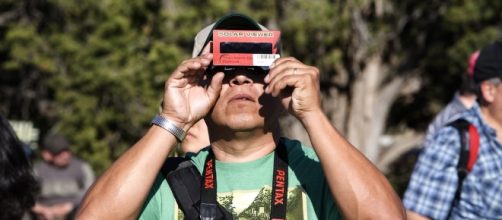Astronomers and spectators for the upcoming total solar eclipse next week should take precautionary measures, as a hurricane is reportedly coming in, a Forbes contributor reported.
Marshall Shepherd browsed weather predictions by the National Hurricane Center and discovered that there is an approaching hurricane close to the path of the eclipse scheduled to happen on August 21. In his Forbes article, there are possibilities of rain and chances of cloud as the total solar eclipse happens.
Shepherd revealed that weather forecasts are becoming clearer that a hurricane cluster is forming around Cabo Verde Islands, which is near the path of the Total Solar Eclipse, Forbes noted.
The report, however, emphasized that at the moment, “it is too early to say with confidence” that the cluster of clouds forming will transform into a hurricane.
The National Hurricane Center was cited as saying that there is weather disturbance at the southeast of Cabo Verde Islands that is linked to a tropical wave. There is also a forecast that the tropical wave will bind together with a low pressure area southwest of the group of islands within around two days.
According to Forbes, weather experts identified the cluster as a tropical cyclone. The storm is at the east of Bahamas at this time. However, the report noted that the path of the total solar eclipse in its full view is north and east of the predicted track of the possible storm.
Starts in Oregon
It was earlier reported that the total solar eclipse will begin in Oregon, particularly in Lincoln Beach. Dubbed “The Great American Eclipse,” the moon’s deep shadow will be seen over the states of Oregon, Idaho, Montana, Wyoming, Nebraska, Iowa, Kansas, Missouri, Illinois, Kentucky, North Carolina, Tennessee, and Georgia.
The total solar eclipse expected to happen next week will end at around 4:09 PM ET, according to NASA Should there be a hurricane coming, spectators must take precautionary measures by taking protective gear along with their equipment.
Preparation for the event
Hotels are now fully booked around areas where the sky phenomenon is happening. Spectators, photographers, astrophysicists and astronomers are advised to wear protective eyeglasses when they are viewing the eclipse.
They can use telescopes and cameras that are specifically made for events such as “The Great American Eclipse.” NASA has reportedly provided a guide for viewers on their site, including set up procedures for their equipment.


